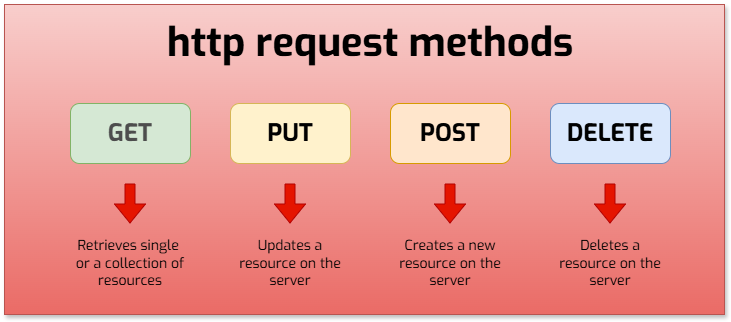What is REST?

REST (REpresentational State Transfer) is an architectural style for providing standards between computer systems on the web, making it easier for systems to communicate with each other using standard HTTP methods and URLs to interact with resources.
Key Principles of REST services (constraints)
Client-Server: The client (e.g., a web browser or mobile app) and server are separate entities, with the client initiating requests and the server responding.
Stateless: Each request from the client to the server must contain all the information necessary to understand the request, and the server does not store any client context between requests.
Cacheable: Responses from the server can be cached by the client to improve performance, as long as the server indicates that the response is cacheable.
Uniform Interface: REST APIs use a standardized interface, typically based on HTTP methods (
GET, POST, PUT, DELETE) and URLs, making them easy to learn and use.Layered System: The client may not be aware of the server's architecture, allowing for flexibility and scalability.
Code on Demand (Optional): Clients can extend their functionality by downloading and executing code from the server.
REST Benefits
- Simplicity: REST APIs are relatively easy to implement and understand.
- Scalability: RESTful architectures can handle large amounts of traffic and data.
- Flexibility: REST APIs can be used with various programming languages and platforms.
- Interoperability: REST APIs can easily integrate with other systems and services.
RESTful Web Services
A RESTful Web Service that is aligned with the REST principles . The URIs identify the resources. For example, a RESTful resource for a book can be identified as https://myapi.com/order.
A resource for an order identified by number could be https://foo.org/myapi.com/order/123. This shows a human-readable URI that is easy to understand and identify.
Verbs in REST

REST uses HTTP verbs, some of the requests used in REST are as follows:
GET: Retrieves a representation of a resource from server to clientPOST: Creates a resource on the server (based on the representation from the client)PUT: Used to update or create a reference to a resource on serverDELETE: Deletes a resource on serverHEAD: Checks for a resource without retrieving it
Safety and idempotence
When it comes to REST, a safe method, by definition, is a HTTP method that does not modify the state of the resource on the server. For example, invoking a GET or a HEAD method on the resource URL should never change the resource on the server. POST is considered not safe since it usually creates a resource on the server. DELETE is also considered not safe since it will delete the resource on the server. PUT is not safe since it will change the resource on the server.
Idempotent method is a method that can be called multiple times yet the outcome will not change.
GET and HEAD are idempotent, which means that even though the same operation is done multiple times the result does not vary. PUT is idempotent; calling the PUT method multiple times will not change the result and the resource state is exactly the same.
DELETE is idempotent because once the resource is deleted it is gone, and calling the same operation multiple times will not change the outcome.
In contrast, POST is not idempotent and calling POST multiple times can have different outcomes.
